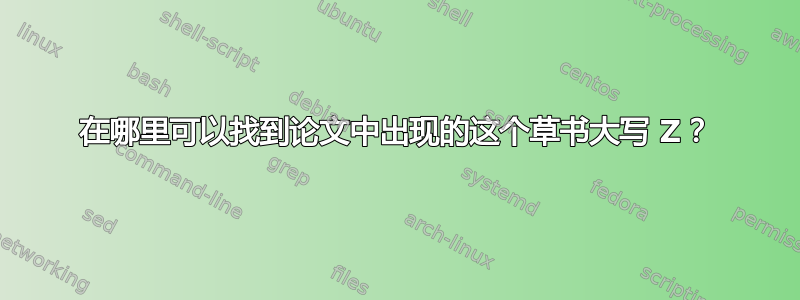
答案1
我可以复制图片(同时修复明显的拼写错误,其中下标应该是上标以保持一致性;\times符号之间的点应该居中):
\documentclass[a4paper,twocolumn]{article}
\usepackage[margin=1cm]{geometry}
\usepackage{amsmath}
\usepackage{newtxtext,newtxmath}
\begin{document}
In addition, as is the case with many RL scenarios, let us
assume that, at each time-step~$t$, the agent observes its
environment through a finite set of \emph{features}
$Z_t^i=z^i$, $i=1,2,\dots,N$, each taking values in some
feature space~$\mathcal{Z}^i$. The observation-space thus
corresponds to the cartesian product
$\mathcal{Z}=\mathcal{Z}^1\times\dots\times\mathcal{Z}^N$.
When this is the case, the structure exhibited by such
\emph{factored~MDPs} can also be exploited to derive
interesting aspects related to specific observation elements.
\end{document}
“手写 Z” 的形状并没有什么特别之处。它只是上一行中使用的斜体“Z”的更漂亮的对应物。
如果没有newtx(注释掉第四行),我们将从相同的输入中获得
如果将 Instead\usepackage{newtxtext,newtxmath}替换\usepackage{fourier}为
你图片中的“脚本 Z”没有“普遍”含义。
您在评论中提到了实数常用的符号。那是另一种情况。在过去的二三十年里,使用ℝ(或其变体,只要它是双击)。虽然几乎每个人都明白它是指实数,但作者可能会对同一对象使用不同的符号。 Lang 的《代数》使用标准粗体是,问,R和C为数字集。






